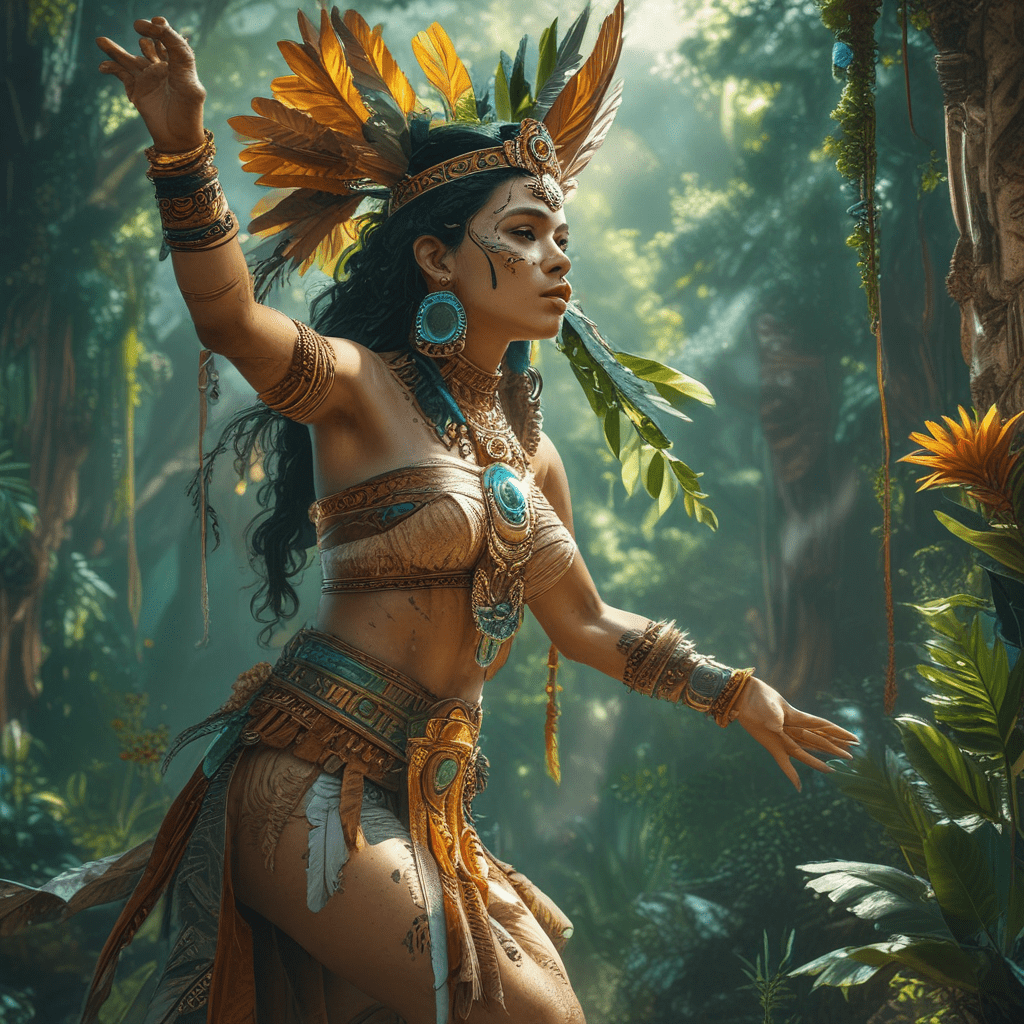Introduction
Imagine a world where plants are not just sources of food and beauty, but also powerful allies in the fight against illness and disease. This was the reality for the ancient Maya, a civilization that flourished in Mesoamerica for centuries. Their deep understanding of the natural world led them to discover the healing potential of countless plants, which they incorporated into their mythology, rituals, and medicine.
Myths and Legends of the Maya
The Maya believed that plants were not merely physical entities but also possessed spirits and energies that could influence human well-being. Their creation myth tells the story of how the gods used maize, beans, and squash to create the first humans. This myth highlights the vital role that plants played in the Maya worldview.
Deities and Plant Associations
Various deities in the Maya pantheon were associated with specific plants. For instance, Itzamna, the creator god, was often depicted holding a flowering tree, symbolizing his power over vegetation. Chaac, the rain god, was linked to maize, the staple crop of the Maya. These associations underscore the importance of plants in Maya religious beliefs.
Rituals and Plant Use
Plants played a central role in Maya rituals and ceremonies. Shamans, or spiritual leaders, used various plants for divination, healing, and communication with the gods. Copal incense, made from the resin of the copal tree, was burned during rituals to purify the air and create a sacred atmosphere. Cacao beans were used in offerings to the gods and as a form of currency.
3. Medicinal Plants in Mayan Culture
3.1 Traditional Healing Practices
The Maya developed a sophisticated system of traditional medicine based on their knowledge of plants and their healing properties. Shamans, who served as both doctors and spiritual leaders, diagnosed and treated illnesses using herbal remedies, rituals, and spiritual guidance. Their treatments aimed not only to address physical symptoms but also to restore spiritual balance.
3.2 Common Medicinal Plants and Their Uses
The Maya utilized a wide variety of plants for medicinal purposes, including:
- Copal (Protium copal): Resin burned as incense for purification and healing.
- Cacao (Theobroma cacao): Used as a stimulant, antidepressant, and pain reliever.
- Neem (Azadirachta indica): Antibacterial, antifungal, and antiviral properties.
- Xtabentun (Turnera diffusa): Hallucinogenic and medicinal properties.
- Chicle (Manilkara zapota): Latex used as a chewing gum and for dental fillings.
3.3 The Role of Shamans and Herbalists
Shamans played a vital role in Mayan medicine, diagnosing illnesses, preparing herbal remedies, and performing rituals to promote healing. They possessed extensive knowledge of plants and their properties, passed down through generations of oral tradition. Herbalists specialized in growing and preparing medicinal plants and often collaborated with shamans in providing healthcare.
4. Theories on the Effectiveness of Mayan Plant Medicine
4.1 Scientific Evidence for Plant-Based Remedies
Modern scientific research has validated the effectiveness of many plants used in Mayan medicine. For example, studies have confirmed the antibacterial properties of neem and the antidepressant effects of cacao. While not all traditional remedies have been scientifically proven, ongoing research continues to explore the potential of Mayan plant medicine.
4.2 The Placebo Effect and Cultural Beliefs
The placebo effect, where a patient's belief in a treatment's effectiveness can lead to actual improvement, likely played a role in Mayan medicine. The strong cultural beliefs surrounding plant-based remedies and the rituals associated with their use could have enhanced their perceived efficacy.
4.3 The Importance of Holistic Healing
Mayan medicine emphasized a holistic approach to healing, addressing not only physical symptoms but also emotional and spiritual well-being. This comprehensive approach aligns with modern understandings of health and underscores the importance of considering all aspects of a person's life when promoting healing.
5. Modern Applications of Mayan Plant Knowledge
5.1 Ethnobotanical Research and Conservation
Ethnobotanical research, which studies the relationship between plants and human culture, continues to explore the traditional knowledge of the Maya. This research helps document and preserve valuable plant knowledge and identify potential new sources of medicines and other useful products.
5.2 Integration of Traditional and Modern Medicine
There is growing interest in integrating traditional Mayan medicine with modern healthcare systems. This approach combines the strengths of both systems, offering patients a wider range of treatment options and acknowledging the cultural significance of traditional practices.
5.3 The Future of Mayan Plant Medicine
The future of Mayan plant medicine is promising, with increasing recognition of its potential benefits and ongoing research into its effectiveness. By combining traditional knowledge with modern scientific methods, we can continue to learn from the wisdom of the Maya and harness the healing power of plants for generations to come.
6. Conclusion
Mayan mythology and the healing power of plants are inextricably linked, showcasing the deep respect and understanding the Maya had for the natural world. Their traditional medicine, based on centuries of observation and experimentation, offers valuable insights into the potential of plants for healing and well-being. By studying and preserving Mayan plant knowledge, we can continue to benefit from their wisdom and explore new possibilities for improving human health and well-being.
7. Frequently Asked Questions (FAQs)
7.1 What are the most common illnesses treated with Mayan plant medicine?
Mayan plant medicine was used to treat a wide range of illnesses, including infections, wounds, digestive problems, pain, and mental health conditions.
7.2 Are there any risks associated with using Mayan plant medicine?
As with any type of medicine, there are potential risks associated with using Mayan plant remedies. It's important to consult with a qualified healthcare professional before using any herbal remedies, especially if you have underlying health conditions or are taking medications.
7.3 Where can I learn more about Mayan plant medicine?
There are a variety of resources available to learn more about Mayan plant medicine, including books, articles, and websites. Additionally, museums and cultural centers dedicated to Mayan culture often have exhibits or programs related to traditional medicine.



